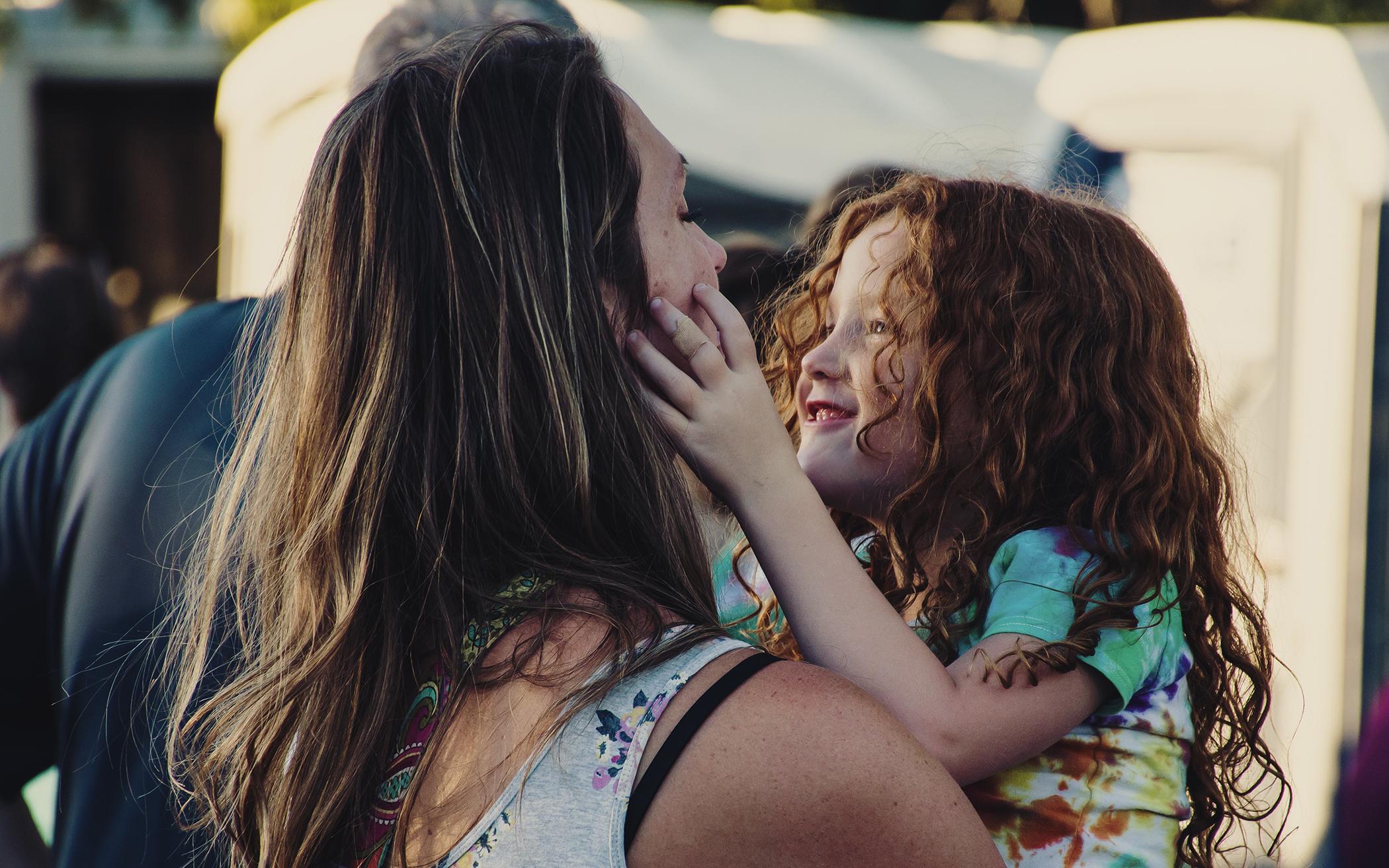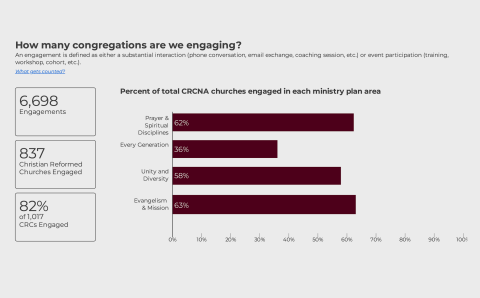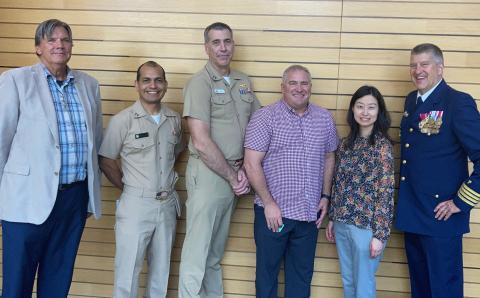According to iFoster, a nonprofit in the U.S. whose mission is to “ensure that every child growing up outside of their biological home has the resources and opportunities they need to become successful, independent adults,” there are almost 440,000 children in foster care on any given day—11,000 in Michigan alone. The Children’s Aid Foundation of Canada reports that 63,000 children in that country are living in foster care.
The need to love and nurture children who are living away from their biological parents is immense and urgent. Eveyln Kruis, a counselor at an adoption and foster agency in Los Angeles, Calif., writes in an essay in Reformed Perspective, “Let us be actively pro-life towards the children who are born.” Michelle Van Dyke, Matt and Marianne Ackerman, and Peter Raap are a part of that work.
Michelle Van Dyke is a foster parent in Grand Rapids, Mich. She attends Neland Avenue Christian Reformed Church, works as a foster parent licensor, and has been fostering as a single woman for 10 years.
“I have always wanted to be a mom and trusted the Lord to lead me in the right direction,” she said. “I looked into several different options for starting a family but was continually drawn to the world of foster care.” Van Dyke’s first placements were with 2- and 3-year-old brothers, and while there were some difficulties, she fell in love with fostering. “Being able to serve as the hands and feet of Christ for little ones in my home is a gift from the Lord.”
For Van Dyke, this concept extends to the birth parents too. “Becoming a foster parent is not limited to caring for a child in your home; it is also dedicated to supporting the success of the reunification process for birth parents,” she explained. “It has been a privilege to come alongside a birth parent while their child is in my house and develop a friendship as they work toward reunifying with their child.”
Matt Ackerman, the campus pastor and director of the Center for Faith and Scholarship at Campus Chapel in Ann Arbor, Mich., agrees. He and his wife, Marianne, are fostering a 6-month-old girl. They felt called toward fostering because they “loved the picture of coming alongside a family that was in need of support and working with them toward reunification.”
“(Foster care) is an amazing picture of redemption to see broken families brought back together after healing and restoration have taken place,” Matt Ackerman said. “We know that doesn’t always happen, but we wanted to at least try to be a part of God’s reconciling work in that space.”
The Ackermans didn’t come to foster parenthood easily. The couple suffered many miscarriages, including one at 21 weeks: a son, Timothy, who had only three chambers in his heart. “We had talked about adoption a bit before that, but in our pain it became a more real option.”
As the Ackermans explored adoption and fostering, Marianne became pregnant again, and today they have a “delightfully spunky” 5-year-old daughter along with the baby they are fostering. In September, much to the Ackermans’ joy and surprise, Marianne gave birth to another baby. “The more the merrier!” Matt Ackerman said.
Fostering Teens
Peter Raap and his wife, Lois (who happen to be Matt Ackerman’s aunt and uncle), were newlyweds when someone asked them to care for that person’s teenage son. They were living in a tiny two-bedroom, one-bathroom apartment. Raap was a high school biology teacher and football coach, and Lois was pursuing her master’s degree and a learning disabilities certificate. The teenager was failing his classes, regularly getting into fights, and had been expelled.
The Raaps took him in, and in six months’ time they had a completely different teen on their hands. He was passing classes, he’d made friends in Young Life, and the varsity football coach was interested in having him play.
“Today he is 66 years old, still happily married, retired, and dotes on his children, his grandchildren, and his five great-grandchildren,” Peter Raap said.
This was the beginning of over 51 years of foster care, which Raap emphatically said is not a ministry.
“It is a command,” he said. “It is the same as what we are to do for the widows and the homeless: love them.” Foster care also is not an evangelistic program, Raap said. “We live our lives; they come alongside. They see God at work.”
Raap says it’s important for foster parents to be themselves and do what they know is best for raising children, but also to keep biological parents in the picture as much as possible. “Show respect for them. They love their children.” Finally, Raap advises foster parents not to be possessive of foster children: “Treat them as though they belong to your best friends.”
The Church as Support
There are ways the CRC can help support this important and restorative work. “I think what is most essential for me,” Van Dyke said, “is for the church to include and support foster families unconditionally, include them in conversations, and ask them to participate and be involved in the rich life of the church.” It has not always been easy to be a single foster parent and feel supported and included in the church. “No matter what someone else’s family looks like: be inclusive, be kind, be a friend,” Van Dyke said.
Raap said his family was abandoned by their church once they began participating in what he called “extreme foster care” (the Raaps fostered children with HIV/AIDS, cancer, and other severe medical issues). “Our once-busy social calendar all of a sudden went blank,” he said. “The telephone just stopped ringing.”
Ackerman suggested such support can include babysitting, providing meals, passing along used clothes and other gear, and loving foster kids just as they love other kids in the church. “For us,” he said, “one of the biggest challenges with fostering has been the uncertainty. In many cases you don’t know how long your placement will be with you or what issues might come up during the placement. Our calling right now is to provide as much love and care we can to a foster child while they’re with us, and our church communities have the same call.”
Van Dyke’s foster children attend a private Christian school, and last summer she had them participate in a creative writing activity related to Keys for Kids devotionals: identify the situation, write how they felt and how it was resolved, think about how it might have gone differently, and then find a Bible verse that best fits that situation. “At the end of the summer,” Van Dyke said, “we (had) a nice little devotional that is personal to our family.”
But one of Van Dyke’s favorite things to do is go hiking with the boys. “When we choose places to visit, what we enjoy most are places off the beaten path,” she said. This perspective defines her family too, she believes. Like the new trails she and her children forge, her family is beautiful and worth getting to know. “Our family looks different from the standard, CRC, traditional family,” Van Dyke explained. But it is still a family, with love, conflict, and beauty worth sharing.
Those interested in learning more about foster care can visit nfpaonline.org/foster or canadianadoption.com/how-to-be-a-foster-parent-in-canada.
About the Author
Callie Feyen is a writer living in Ann Arbor, Mich. She attends First Presbyterian Church of Ann Arbor. Callie writes news for The Banner and contributes to Coffee+Crumbs, and T.S. Poetry Press. She holds an MFA in Creative Writing and is the author of The Teacher Diaries: Romeo and Juliet, and Twirl: My Life in Stories, Writing, & Clothes.









